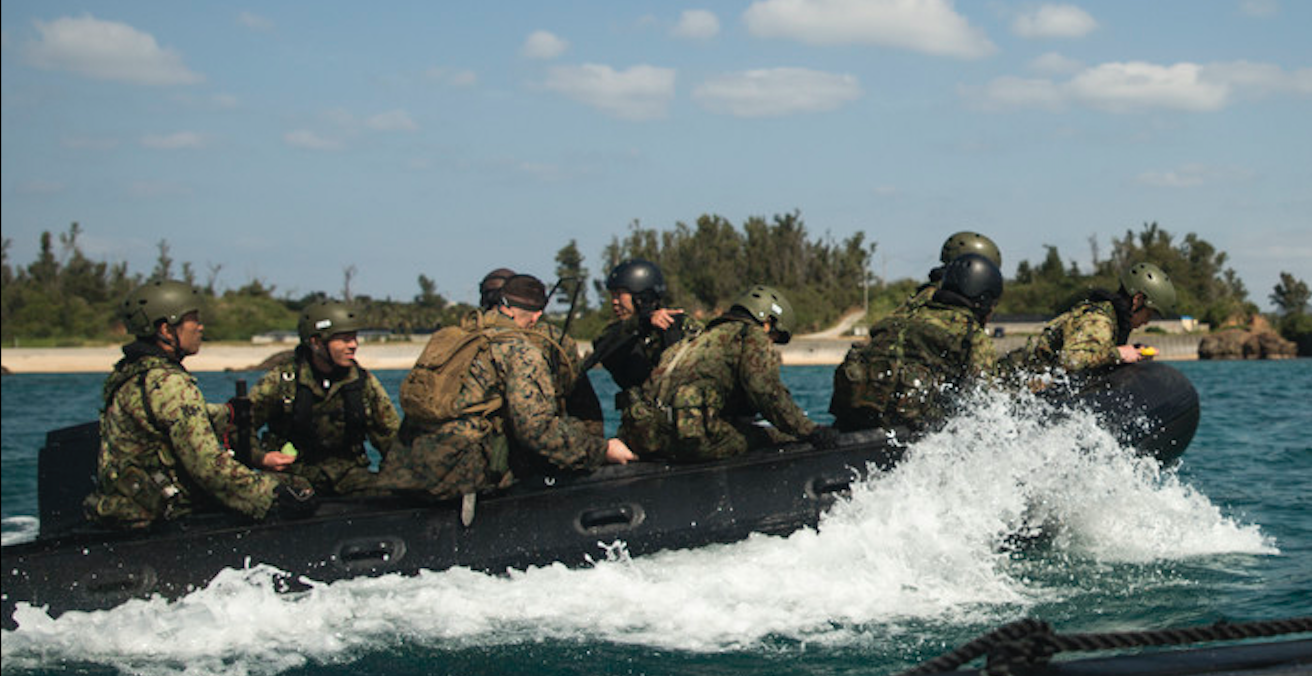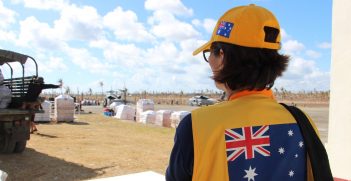Foam in the Ocean? Quad 2.0 at 18 Months

Despite greater unity on the concept of the “free and open Indo-Pacific,” the renewed Quadrilateral Security Dialogue may suffer from many of the same problems as its predecessor.
The November 2017 East Asia Summit in Manila brought the revival of the Quadrilateral Security Dialogue, or Quad. The original Quad arose from the need to coordinate humanitarian relief efforts between the region’s four major democracies in the aftermath of the 2004 Indian Ocean tsunami. Then after Australia’s unilateral withdrawal in 2009, it endured an almost decade-long stint in purgatory. Its 2017 resurrection was met with significant debate concerning the role that the Quad’s four members can play in dealing with an increasingly confrontational China. Despite this renewed interest, “Quad 2.0” was swiftly dismissed by Beijing, with Chinese Foreign Minister Wang Yi suggesting that it merely served as an “attention-grabbing” concept that would dissipate “like the sea foam in the Pacific or Indian Ocean.”
18 months on from the Quad’s revival, has Foreign Minister Wang’s “foam in the ocean” comment held true or is the renewed Quad able to achieve far more than its predecessor?
Quad 2.0 emerges in a vastly different strategic and political environment than its predecessor. The original Quad was portrayed as the United States and Japan leading a reluctant India and Australia into the politically unpalatable approach of militarily “containing” Beijing. In contrast, the current Quad enjoys much more consensus on countering Beijing’s challenges to maritime boundaries and international law. Quad members have broad agreement on the importance of a “free and open Indo-Pacific,” a strategy that centres around economic liberalism, freedom of navigation and observance to the rule of law and sovereignty. While this strategy is considered ambiguous, Quad members themselves now have much less strategic ambiguity towards China. The United States now explicitly views China as a strategic competitor, Australia is adopting an increasingly hard line against Beijing and India and Japan are now seeking to deepen bilateral security relationships with other Quad members. While a lack of consensus between members was one of the major factors leading to the Quad’s demise in 2007, Quad 2.0 enjoys a much greater degree of agreement around the maintenance of a “free and open Indo-Pacific.”
There has already been a significant uptick in working-level bilateral engagement between Quad members, including the meetings in June and November 2018 and May 2019 that reaffirmed the Quad’s commitment to a “free and open Indo-Pacific.” The number of joint naval exercises between Quad members has also increased rapidly in recent years, especially in contested waters such as the South China Sea. The convergence on the “free and open Indo-Pacific” concept has also allowed the Quad to diversify away from solely security concerns, including towards infrastructure, counterterrorism and interoperability during humanitarian emergencies. There have also been notable attempts to include Southeast Asian nations like Vietnam and other ASEAN members into the Quad’s focus, mainly to bolster its legitimacy as a regional bulwark to preserve the liberal international order.
Despite this solid start, there are some considerable issues that remain unaddressed by Quad members. There is still some disagreement between members on India’s continued rebuffing of Australian attempts to participate in its annual Malabar military exercise. Additionally, despite greater enthusiasm about the grouping, Quad meetings continue to be undertaken at sub-ministerial or assistant secretary levels and on the sidelines of multilateral summits. India in particular has argued against proposals by other Quad participants to upgrade the meetings’ importance. These meetings have also consistently failed to produce a joint communiqué, instead leaving individual members to release their own occasionally incongruent statements, suggesting some divergence in how the “free and open Indo-Pacific” strategy is perceived and understood by Quad members.
This leads to the key existential question that continues to plague the Quad: what exactly does the Quad seek to achieve?
It is not clear whether Quad 2.0 should be considered an “Asian NATO” or just a loose partnership of like-minded nations. Nations like India and Australia continue to be hesitant of moves that may be seen as confrontational, given that they rely on China’s immense economic markets. While Quad leaders like Japanese Prime Minister Shinzo Abe emphatically state that the Quad “does not mean necessarily engaging in any military activities,” and while there have been no Quad-specific military exercises as of yet, Beijing tends to view the Quad 2.0 in much the same lens as the original Quad: a policy of military containment. With the Quad’s other areas of focus such as infrastructure remaining relatively underdeveloped, it has retained a heavily security-oriented agenda; the pursuit of such an agenda could lead to reduced cooperation, increased misunderstandings or even direct confrontation with China. Quad 2.0 must develop a clearer idea of whether it seeks to act as a military counterbalance to China or a more diplomatic hedging mechanism to preserve the liberal international order. Otherwise it seems doomed to suffer the same fate as its predecessor.
The first 18 months of Quad 2.0 have shown that there is now greater convergence between its four key members — and others — on values and a belief in a “free and open Indo-Pacific.” Other than this broad consensus, it is hard to see if anything else has changed since the collapse of the first Quad in 2007. India and Australia remain somewhat hesitant albeit to a lesser degree than in 2007, meetings continue to be conducted at low levels and have yet to result in a joint communiqué and, most critical of all, it still faces the same existential questions it faced during the Quad’s first iteration. On whether Foreign Minister Wang’s “foam in the ocean” comment is true or not, only time will tell. Though if Quad 2.0 continues to fail in addressing these key issues, it may be destined to dissipate once more.
Euan Moyle is a Master of International Relations student at the University of Sydney, and an internship coordinator with the Australian Institute of International Affairs NSW.
This article is published under a Creative Commons Licence and may be republished with attribution.





